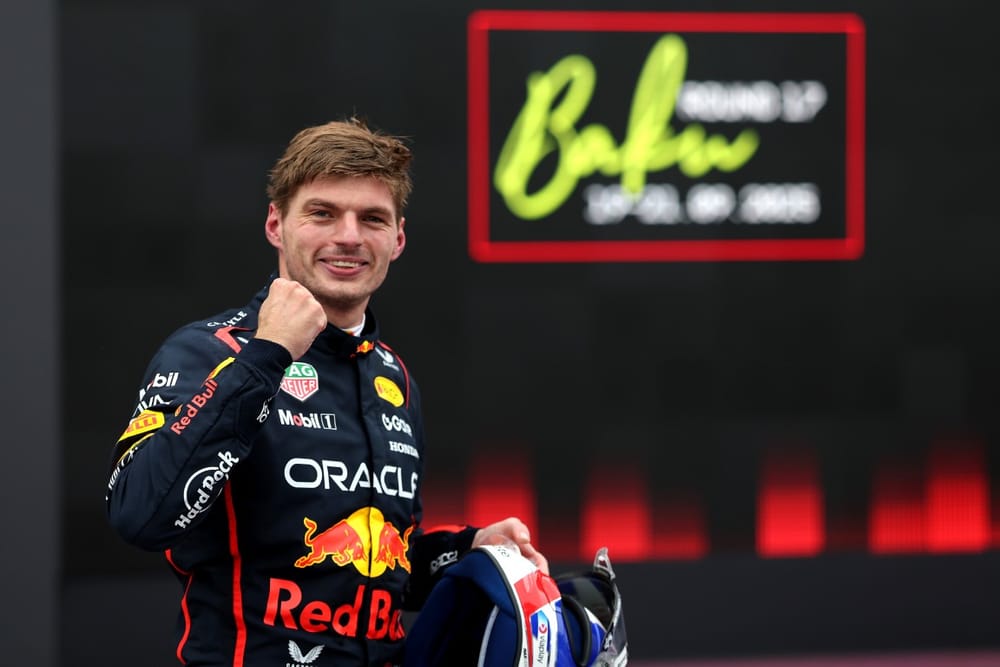Max Verstappen did it again at the 2025 Azerbaijan Grand Prix; two Formula 1 races in succession he’s pulled the perfect result from a car which just a few races ago looked like it would be spending the autumn of its racing life in mediocrity.
He immaculately converted the great job he and the team had done in qualifying with a perfect race: start-to-finish in the lead from pole plus fastest lap.
A brilliant weekend-long performance, but it should be said that McLaren and Ferrari made it relatively easy for him. Their underperformance from Saturday impacted heavily into a race shaped by DRS trains in which they could make little progress. There weren’t even any mid-race safety cars or weather interruptions to inject a bit of Baku jeopardy. In contrast to the wild red flag-fest of qualifying, it was the least eventful Azerbaijan GP since the inaugural event of 2016.
In fact there was some irony that the only safety car came as Oscar Piastri crashed (on the opening lap), just as he had in qualifying. This after jumping the start and then falling to the back from his ninth place grid position as the McLaren’s anti-stall kicked in.

Piastri leads the championship by a still-healthy 25 points as team-mate and title rival Lando Norris could do no better than seventh – exactly where he’d qualified.
Instead, behind the imperious Verstappen it was a race notable for Williams taking a podium after a great weekend-long performance from front-row starter Carlos Sainz. With Norris and the Ferraris bottled up behind the overachieving Liam Lawson’s Racing Bulls, the Mercedes were the only quick cars able to attack Sainz. He couldn’t defend from them both and so had to let George Russell go free so as to protect himself from Kimi Antonelli. But this was all happening far, far behind the #1 Red Bull - which has responded extremely well to the team’s recent Verstappen-led rethink on how the car is balanced.
No one at Red Bull seems to believe such form will carry through to higher downforce tracks. But even if it does, Verstappen’s 69-point deficit to Piastri with seven races to go still seems too much of a stretch for a title challenge. Doesn’t it?
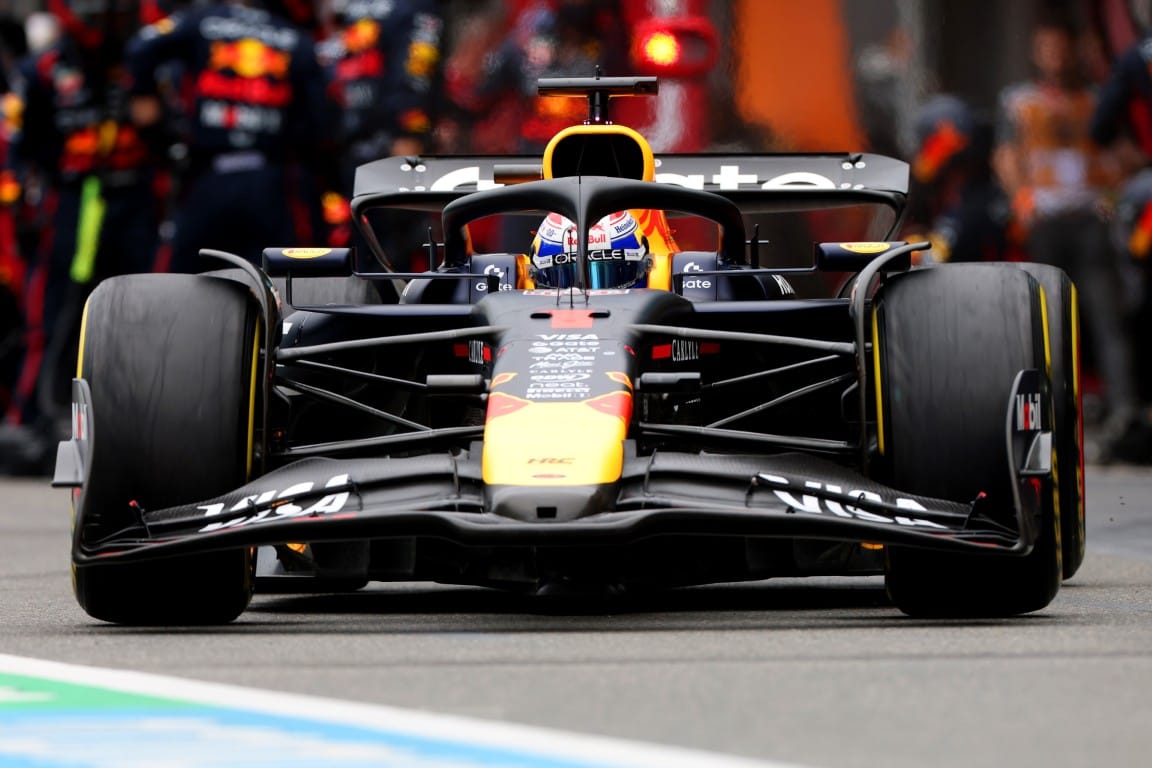
How much of this surge in Red Bull form is just from two consecutive low-downforce tracks? Well, it was a much-improved car at Zandvoort too, a track with a very unfriendly layout for an RB21 which doesn’t like long corners or high-downforce demands. Verstappen was nowhere near McLaren pace there, but best of the rest.
"Everyone has been working so hard to bring this car step-by-step back into competitiveness," says team boss Laurent Mekies. "We fight to get more and more learning to get a fuller understanding.
"We had a great Monza but Monza is so specific it was not so clear how much of that progress we could bring to Baku. Which is also very specific with all low-speed corners… but recently we do seem to have unlocked something at least on slow corners."
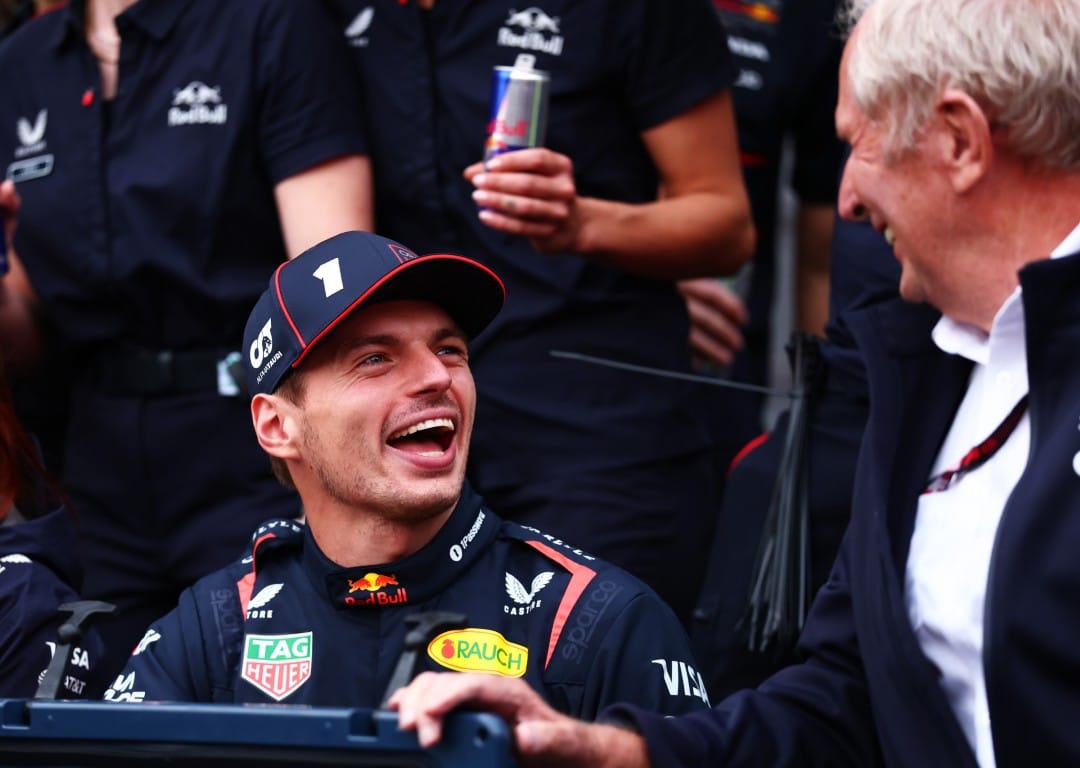
Verstappen and Helmut Marko spoke at Monza of the changed trackside emphasis from simulation to Verstappen in how they go about improving the car through a weekend. That applied here too, but the key, just as at Monza, was that relatively big front wing. It allowed Max to get the car to dig into those 90-deg turns without the mid-corner complications which arise from trying to do that rotation from the rear.
It’s a more traditional, old-school way of getting the car to turn and Baku doesn’t have any of the higher-speed corners that would normally penalise such a big front/low rear wing combination. And the Red Bull was running very little rear wing, smaller than McLaren, Ferrari or Mercedes, helping it to fly down those long straights.
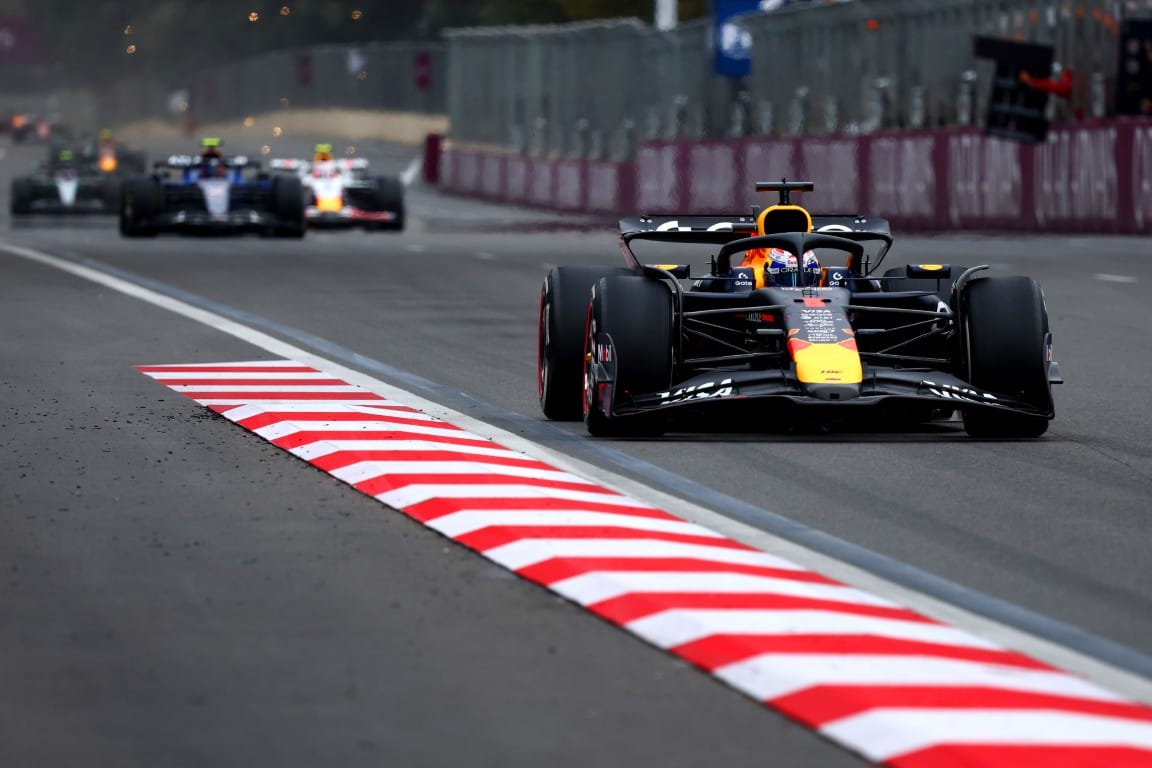
Taking full advantage of that more driveable set-up, Verstappen was almost uniquely into the groove demanded by the wildly variable track conditions of qualifying; not gung-ho attacking, not over-committing into the turns, but just feeling where the grip was, different every lap, and being prepared to improvise from there. Smooth and just under the tyre in most places.
Rarely perfect in any one corner – because it was impossible to be perfect over the lap – but with the perfect approach and feeling for a track and wind which was trying to throw you into the wall at almost every turn. Sainz and Liam Lawson found a similar groove on Saturday.
But it needs the car to cooperate. It needs to give the sensations which instil that confidence, allows the driver to relax.
The pre-Zandvoort Red Bull would not have allowed Verstappen to do that. It wasn’t some magical transcending of the machine, but simply the outcome of the world’s best driver finally getting the car to behave in a way which allowed him that approach.
It’s interesting that the Racing Bulls car - which was run for most of this season by Mekies - has had these traits since day one. Mekies doesn’t directly get involved in determining set-up but, as Verstappen has pointed out, he does get involved in asking the engineers questions, ‘common sense questions’ as Max calls them.
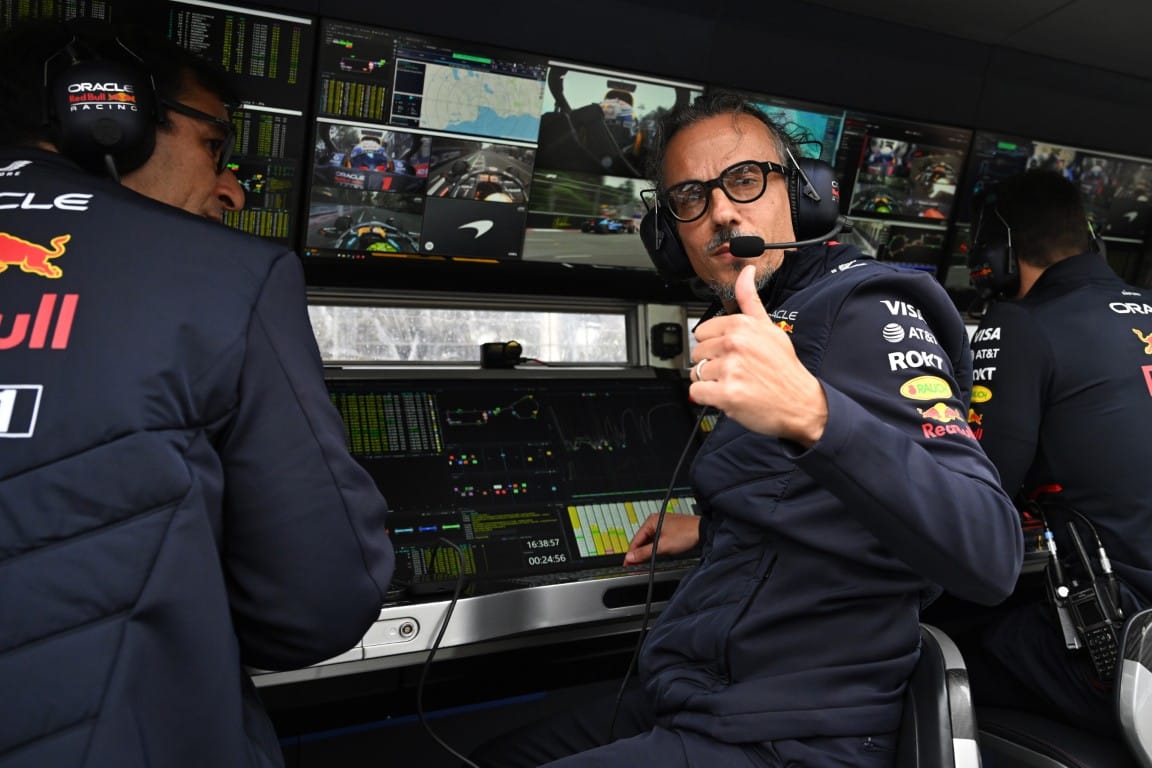
Maybe that’s how Mekies has helped guide Verstappen towards a more Racing Bulls sort of feedback loop.
It’s probably not a coincidence that Lawson qualified the Racing Bulls third here in the trickiest of circumstances. The driver still needs to do the lap, of course, and Lawson was faultless this weekend – on both Saturday and Sunday. But the job was much trickier on Saturday.
Too tricky for the McLaren drivers. The MCL39 is super-fast, potentially probably faster than the Red Bull here. But that potential is often hidden in the virtual world - which Red Bull has been moving away from of late.
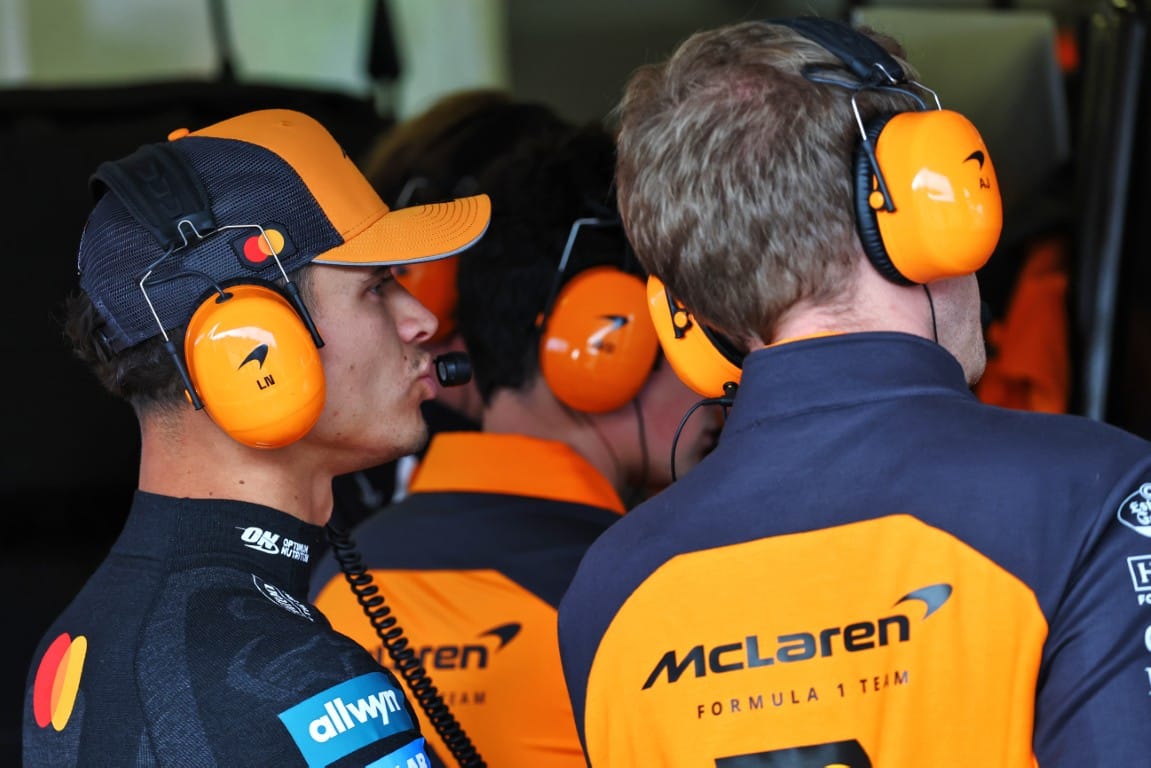
Exploring the McLaren’s limits on a low-downforce track can be a little like prodding a tiger. Neither Norris nor Piastri did a great job with it, but it’s a car which in the circumstances of Saturday made it much more difficult to do a great job. “Even when I was chasing Yuki [Tsunoda] in the race,” recalled Norris, “there were places where I could see no way could I go as quick as that. They have improved that car a lot.”
But there was probably some McLaren play-safe nervousness about why Norris started – and therefore finished – so far down. In sending him out first in the final Q3 dash he was protected from any yellow flags, but it meant he was driving a damper track than anyone else. As Juan Pablo Montoya observed in his pundit role: “The car on the driest track set pole.”
Norris came close to breaking out of that seventh deadlock around the stops. But another front wheel tightening problem at the pitstop – on the right front this time – meant he came out behind the Lawson/Charles Leclerc train instead of just in front of it. On hard tyres 29 laps newer than those on Kimi Antonelli’s Mercedes up ahead of Lawson, Norris could conceivably have been fighting the second Mercedes for fourth position. But no more than that.
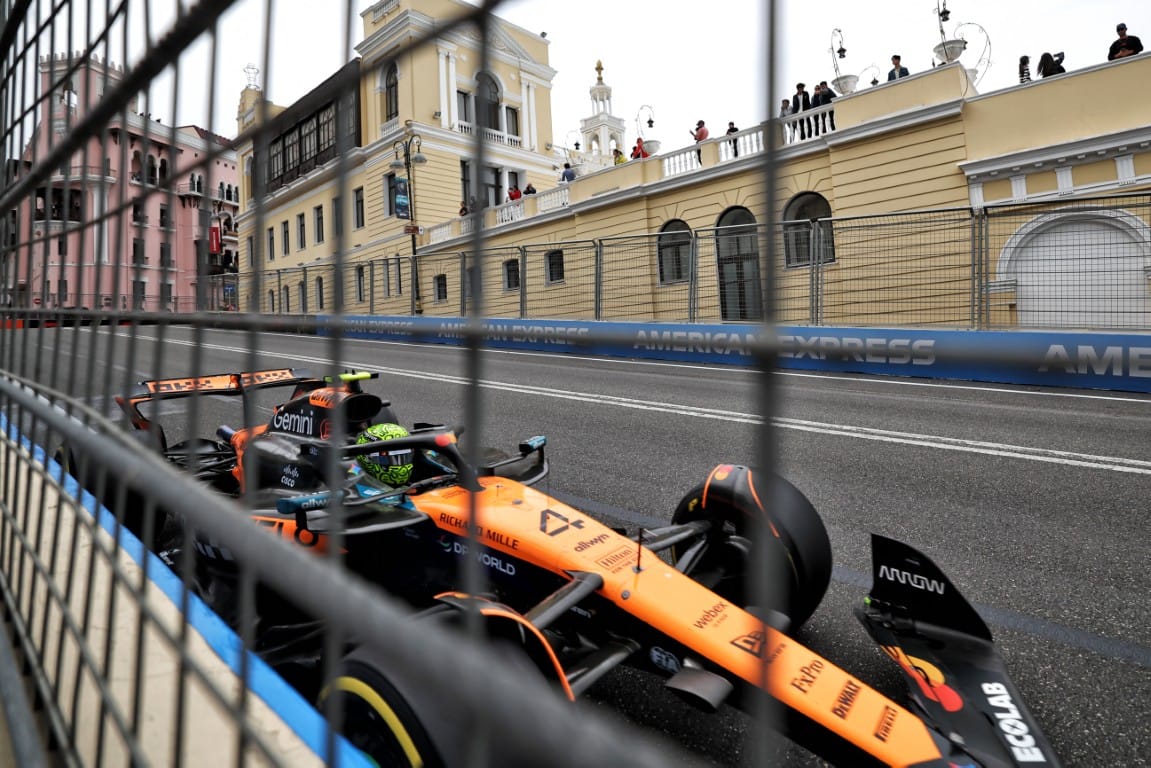
It wasn’t only in set-up that Verstappen was imposing his will. Unusually for a polesitter, he was adamant he wanted to start on the hard tyre. Despite not having driven on it ant any point in the weekend.
“Max pushed a lot for that,” confirmed Mekies. “It wasn’t so much about knowing how it would compare to the medium, but more about our expectation of safety cars and red flags. We wanted to be able to drive to whenever the safety car came.”
The hard increased the range over which they could do that – and there was also the possibility of rain around an hour into the race.
“The hard came with other risks,” continued Mekies, “but Max was very convincing in saying he could deal with those other risks.”
The fact that it’s such as short run to Turn 1 and that it was Sainz – a driver surely not about to risk a massive result for Williams – alongside probably played into Max not worrying too much about the downside risks.
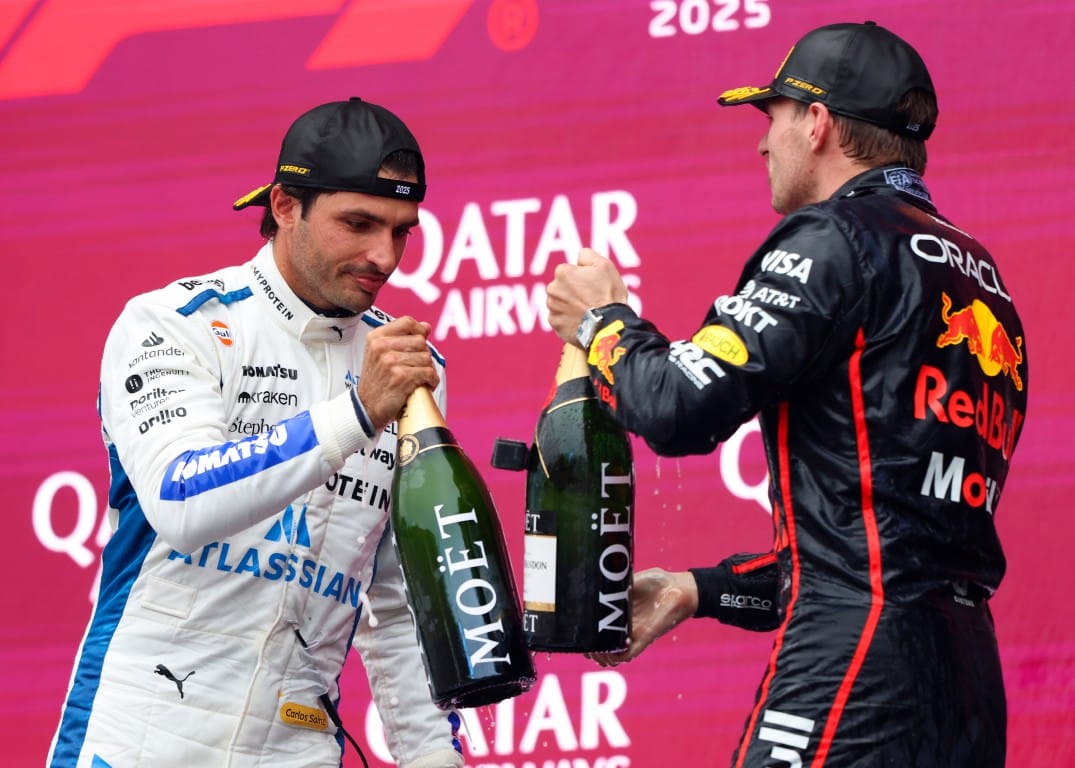
The hard was perfect. With almost no degradation, it allowed Verstappen to stay out until after everyone else had stopped (just 11 laps from the end) and still emerge in the lead.
Mercedes had split its tyre strategy, with George Russell starting from fifth on the hards, Antonelli from fourth on the mediums. This allowed them to pincer both Lawson and Sainz – who ran in third and second respectively throughout the first stints. Bringing Antonelli in on lap 18 of 51 forced Lawson to stop on the next lap. Russell – once he’d got past the feisty Tsunoda, who’d got ahead after Antonelli showed Russell the Turn 1 wall to discourage him from passing - stayed out long and comfortably overcut himself past Lawson and ultimately Sainz, too, such was the pace advantage of the Mercedes and the durability of the hard.
Williams brought Sainz in on lap 27 to ensure he exited still ahead of Antonelli. “But as soon as I saw that on my new hard tyres I wasn’t able to go any faster than George on his old tyres, I knew he’d come out ahead,” related Carlos, “so I just concentrated then on keeping Kimi out of my DRS.”

It was a sweet podium for him and the team, a strong second place for an unwell Russell. “Yeah,” acknowledged Russell, “but it wasn’t a spectacular weekend. The cars we ordinarily fight underperformed and we picked at the leftovers. The cool temperatures probably helped us a little, too, and I don’t think it’s a coincidence when the track’s cool we are at our best and McLaren at their worst.”
Russell was the next driver on the grid after Verstappen to start on the hard and comfortably beat the three medium-starting cars (Sainz, Lawson and Antonelli) between them. The hard was the correct starting tyre.
Lawson actually overtook Antonelli immediately after the Mercedes had undercut him but then ran out of battery halfway down the long straight and lost that position for good. He did manage to make a similar move stick on Yuki Tsunoda after the Red Bull had undercut him.
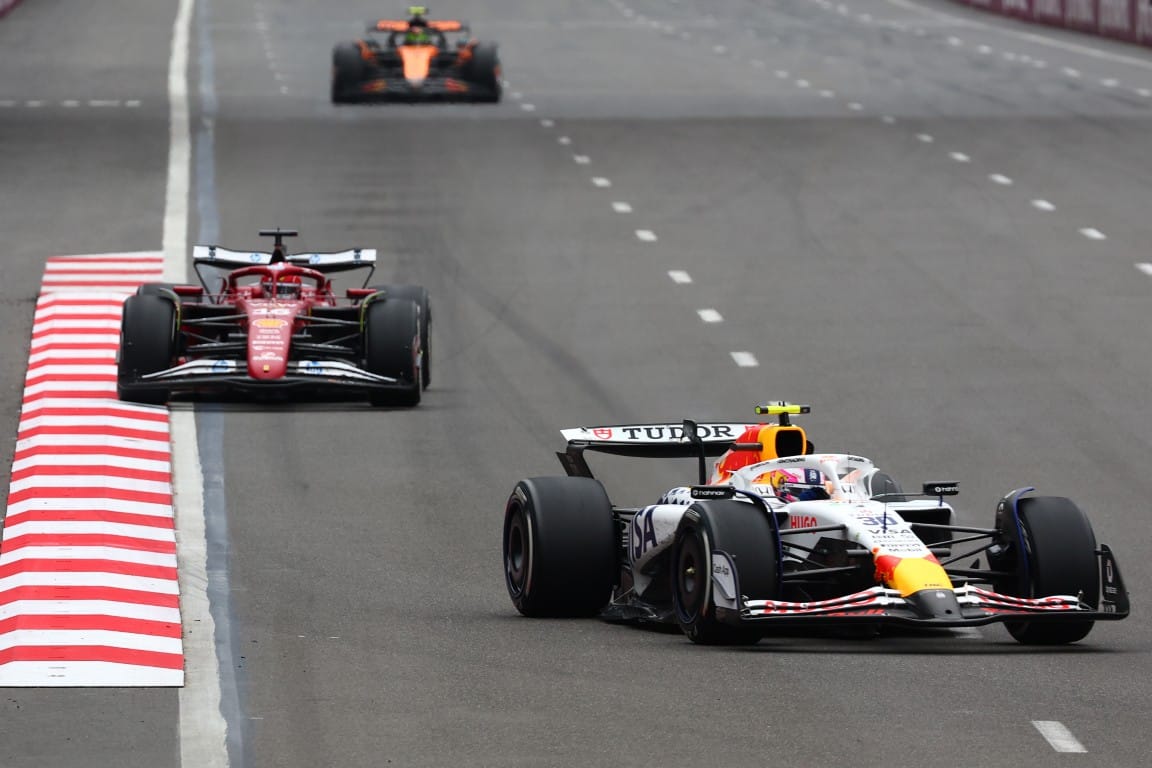
He then had a highly-pressurised second stint with Tsunoda, Leclerc, Norris and Lewis Hamilton bottled up behind. Norris got by the old-tyred Leclerc, who was then instructed to allow the much newer-tyred Hamilton past. Like this they circulated until the end in a DRS train, fifth down to ninth, with Lawson never getting a wheel out of line in the very trimmed-out Racing Bulls cars.
“It wasn’t really like traditional defending,” he said after finishing an excellent fifth. “It’s more about getting your energy management right and then that helps the tyres and gives you more drive out the corners.”
It’s tempting to believe the Ferraris were fast cars out of position. But actually, there was no evidence they were actually fast.
“No, we were slow,” said Hamilton. “I think we went in the wrong direction after Friday. After FP2 I thought I was going to be fighting for pole.”
Even without the operational errors in Q2, even before Leclerc crashed in Q3, neither Ferrari looked set to be fighting for pole. It underperformed just as surely as McLaren this weekend.
No one at Red Bull is getting too carried away given the tracks which are coming up, but even if this was just a Monza-like rare opportunity to humble McLaren, Verstappen made it all happen.


